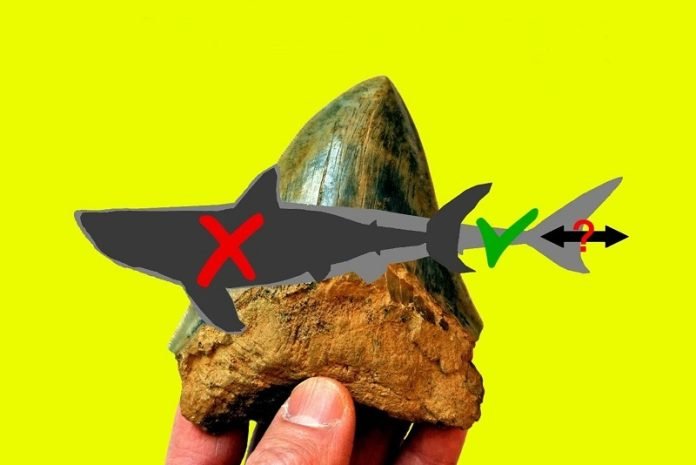
Gigantic shark was slimmer than depictions in movies.
When you think of the Megalodon, you probably imagine a massive, terrifying shark, right? But a new study is changing how we see this ancient ocean giant.
The Megalodon, which disappeared 3.6 million years ago, was not as bulky as we once thought. This revelation is shaking up our understanding of this colossal shark and its role in the ancient seas.
The Megalodon is often depicted as a gigantic monster in movies like “The Meg” (2018) and “Meg 2: The Trench” (2023).
Previously, scientists believed this shark could grow up to 65 feet long. But there’s a catch: our knowledge of the Megalodon is mainly based on its teeth and vertebrae found in fossils, which doesn’t give a complete picture.
For a long time, researchers looked at the modern great white shark as a model for the Megalodon, thinking it had a similar round and stocky body.
But Phillip Sternes, a biologist and the first author of this new study, along with a team of 26 scientists worldwide, has brought a fresh perspective.
Published in the journal Palaeontologia Electronica, their research suggests the Megalodon was more slender and maybe even longer than we thought. “Think of the modern mako shark,” Sternes says, hinting at a sleeker body shape for the Megalodon.
This new view emerged when the team noticed differences in previous size estimates for the same Megalodon specimen.
It was a lightbulb moment for the researchers, including co-leader Kenshu Shimada, a paleobiology professor at DePaul University.
To get a better idea, they compared the Megalodon’s vertebrae with those of living relatives of the lamniform sharks, using a CT scanner to measure a great white shark’s entire vertebral skeleton. The outcome? The Megalodon was not just a bigger version of the great white shark.
This revised image of the Megalodon affects our understanding of the shark itself and its impact on the ocean’s ecosystem and evolution. For instance, a slimmer Megalodon with a longer body suggests a longer digestive tract.
This might mean the shark could absorb nutrients more efficiently and didn’t need to eat as often as we thought. “If I only have to eat one whale every so often, whale populations would remain more stable over time,” Sternes explains.
Some experts thought a decrease in prey led to the Megalodon’s extinction. But Sternes proposes another angle: the rise of the great white shark. This new competitor, possibly more agile, might have been a better predator, adding pressure on the Megalodon for food and contributing to its downfall.
The team, including experts from countries like the U.S., UK, Austria, France, Japan, Mexico, Brazil, and Australia, believes that understanding the Megalodon’s true nature affects how we view ancient marine life and its ongoing influence on today’s oceans.
“Now that we know it was a thinner shark, we need to reinvestigate its lifestyle, how it really lived, and what caused it to go extinct,” says Sternes.
This study is not just about correcting a misconception; it’s a starting point for further research into the mysterious life of one of the ocean’s most legendary predators.



